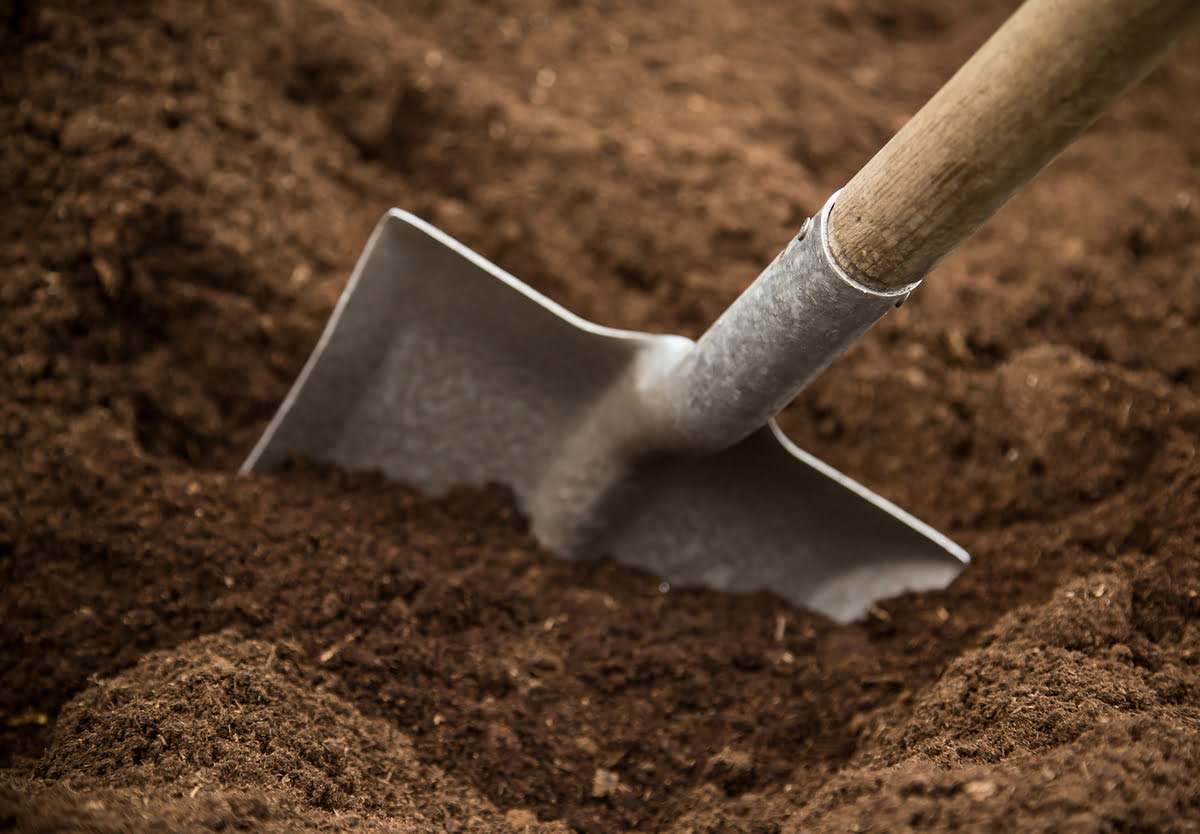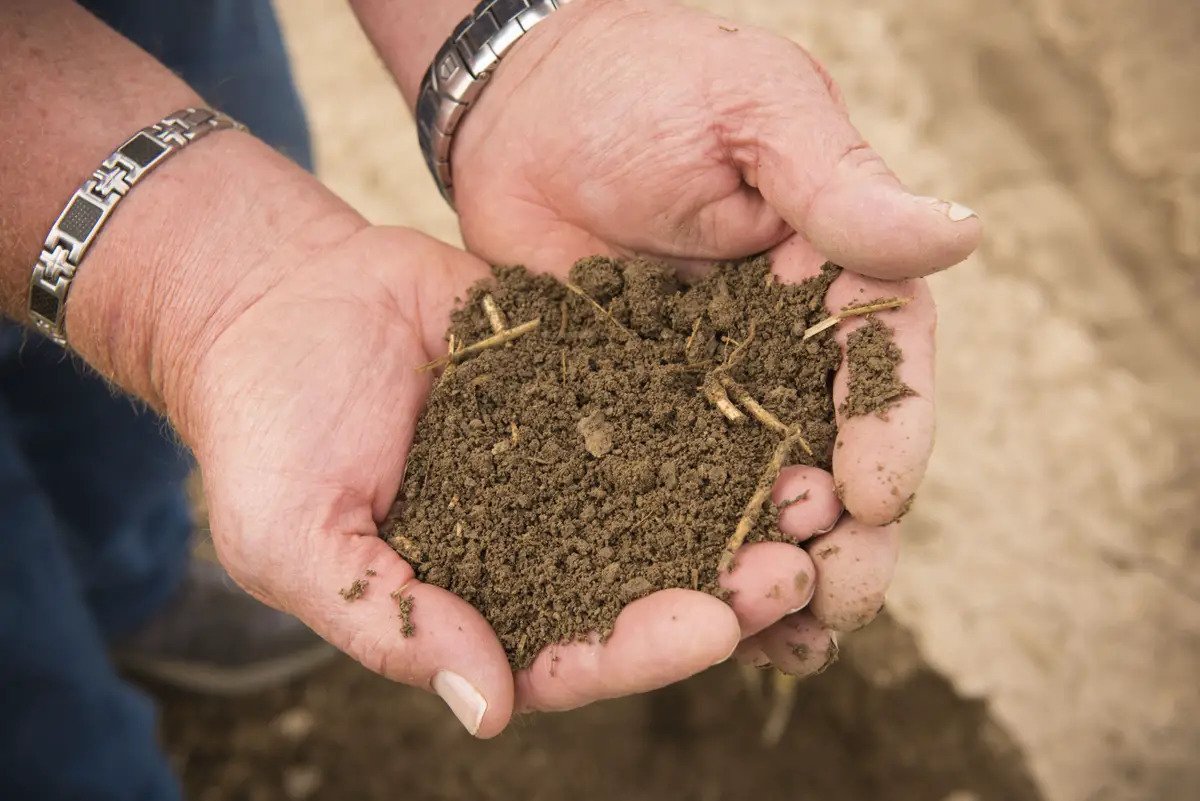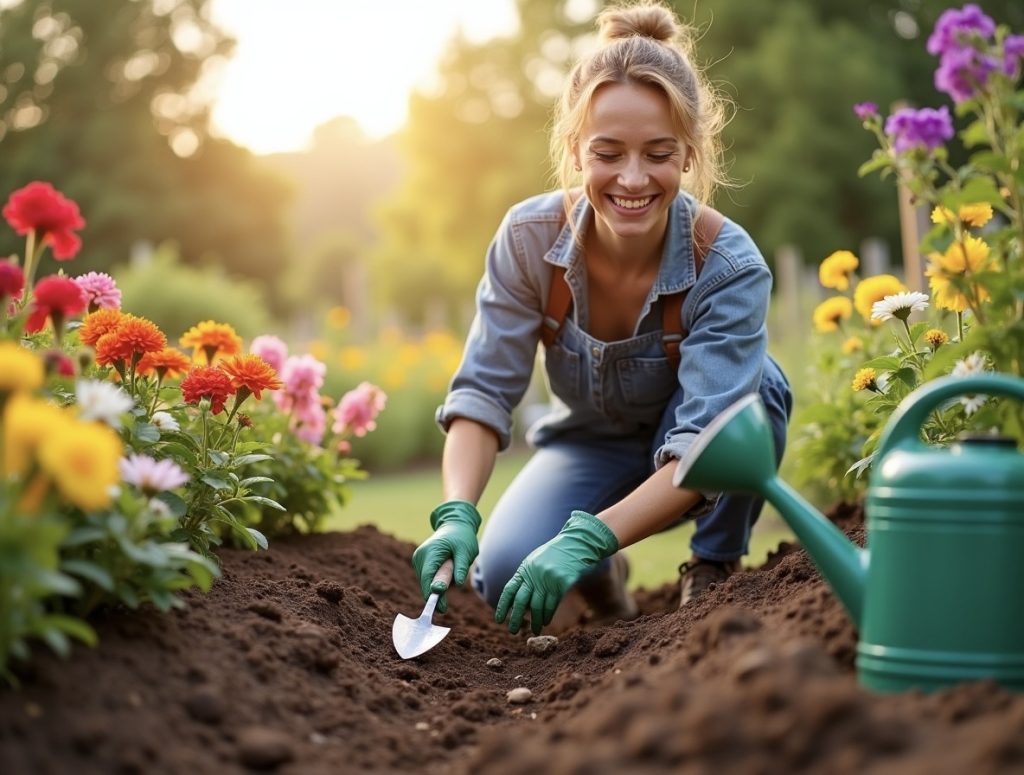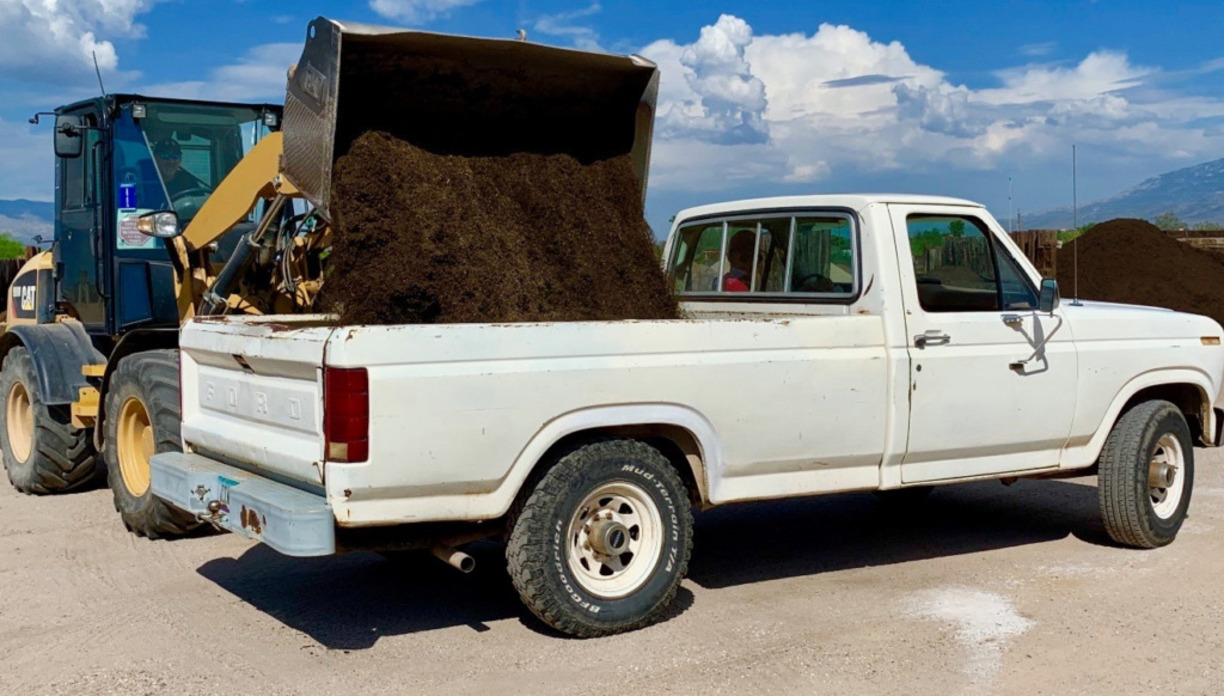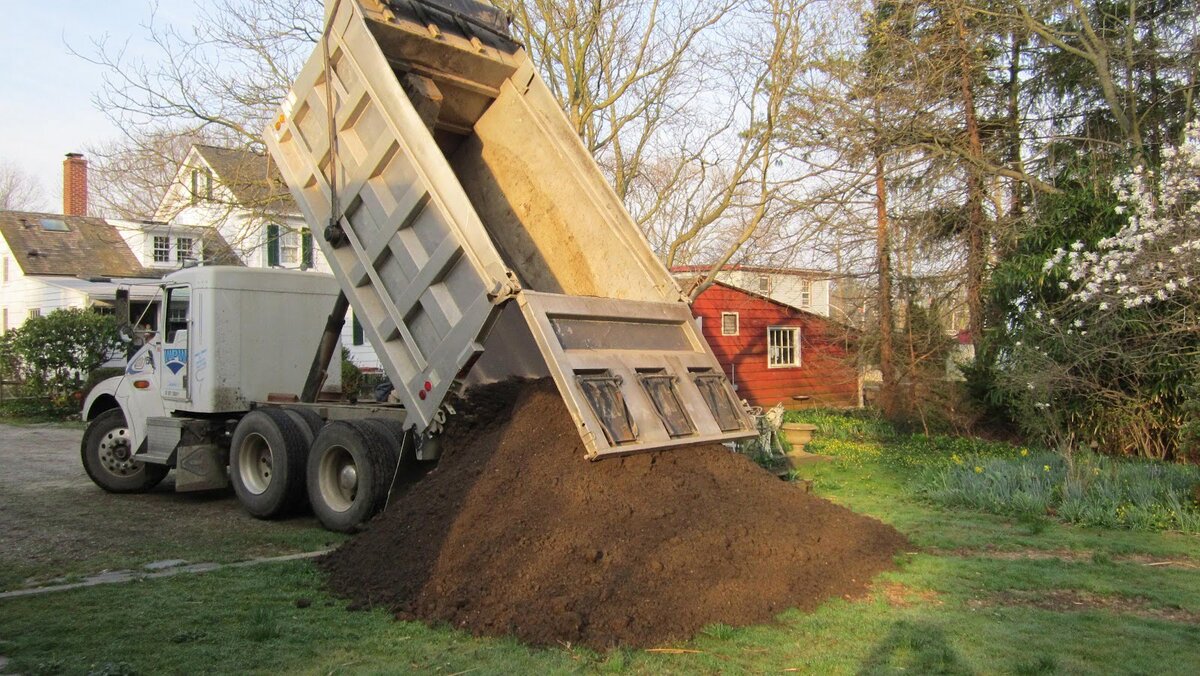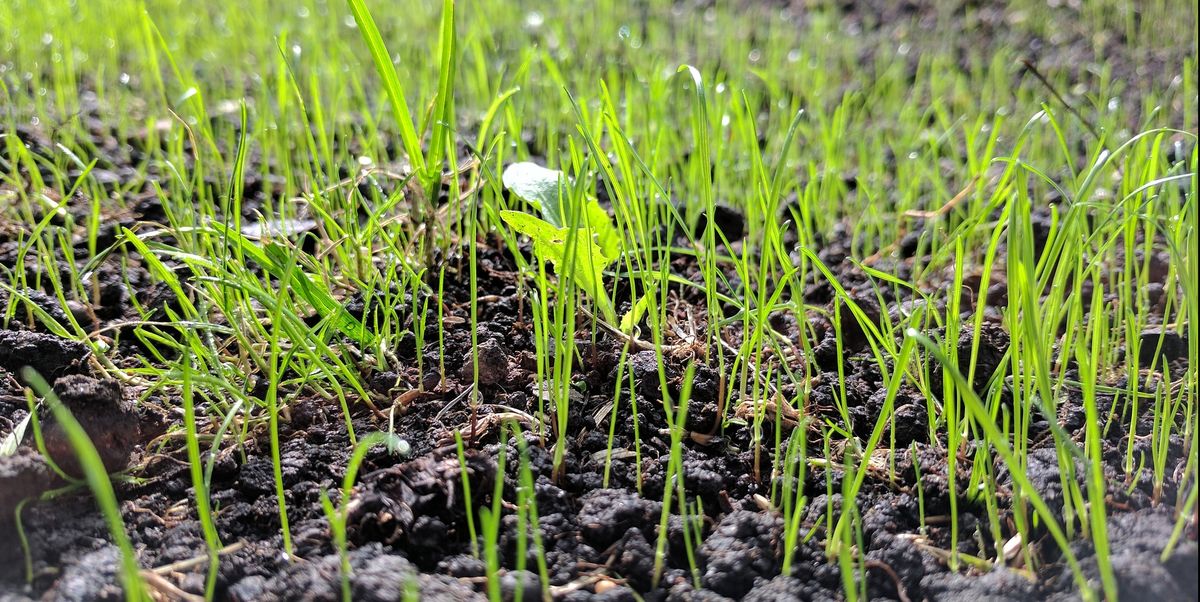Home>Gardening Basics>Understanding Soil>How Much Topsoil In A Yard


Understanding Soil
How Much Topsoil In A Yard
Modified: February 8, 2024
Learn about understanding soil and discover how much topsoil is in a yard, ensuring you have the right knowledge for your gardening and landscaping needs.
(Many of the links in this article redirect to a specific reviewed product. Your purchase of these products through affiliate links helps to generate commission for Chicagolandgardening.com, at no extra cost. Learn more)
Table of Contents
Introduction
When it comes to creating a beautiful and thriving yard, understanding the role of topsoil is crucial. Topsoil is the uppermost layer of soil that contains a high concentration of organic matter and nutrients. It serves as the foundation for healthy plant growth and provides essential support for the root systems of plants.
Having the right amount of topsoil in your yard is key to achieving a flourishing landscape. Whether you’re planning to plant a lush garden, establish a new lawn, or undertake a landscaping project, knowing how much topsoil you need is essential for success.
In this article, we will dive deep into the world of topsoil and explore its importance in yard development. We’ll also discuss the factors that can affect the quantity of topsoil needed, and how you can calculate the ideal amount for your specific landscaping needs.
So, if you’re ready to dig in and gain a deeper understanding of how topsoil can transform your yard, keep reading!
What is Topsoil?
Topsoil refers to the uppermost layer of soil, typically the top 2 to 8 inches, that is rich in organic materials and supports plant growth. It is a vital component of the Earth’s ecosystem and plays a significant role in determining the health and fertility of a yard or garden.
Topsoil is formed over time through the natural processes of weathering and decomposition. It contains a diverse range of organic matter, such as dead plants, animals, and microorganisms, which break down and contribute to its nutrient content. This organic matter improves the soil’s structure, water retention, and nutrient-holding capacity, making it ideal for plants to grow and thrive.
The composition of topsoil can vary depending on factors such as climate, vegetation, and geological characteristics. It predominantly consists of mineral particles, such as sand, silt, and clay, along with the organic matter mentioned earlier. Additionally, it contains essential nutrients like nitrogen, phosphorus, and potassium, which are vital for plant growth.
Topsoil is commonly obtained from the uppermost layer of the Earth’s surface through processes like excavation or stripping. It can be purchased from garden centers and landscaping suppliers or acquired by harvesting it from other areas on your property, such as from raised garden beds or removing turfgrass.
Now that we have a basic understanding of what topsoil is and its importance for plant growth, let’s explore why it is crucial to have the right amount of topsoil in your yard.
Importance of Topsoil in Yard
The presence of adequate topsoil in your yard is essential for creating a healthy and vibrant landscape. Here are a few key reasons why topsoil plays a crucial role in yard development:
1. Nutrient-Rich Foundation: Topsoil is rich in organic matter and nutrients, providing an ideal foundation for plants to grow. It acts as a reservoir for essential elements like nitrogen, phosphorus, and potassium, which are vital for plant development and overall health.
2. Enhanced Water Retention: Topsoil has excellent water-holding capacity, allowing it to retain moisture for longer periods. This is particularly beneficial during dry periods or in regions with limited rainfall. The ability to retain water helps sustain plant growth and minimizes the need for excessive irrigation.
3. Improved Drainage: While topsoil retains water, it also allows for proper drainage, preventing waterlogging and potential root rot. The ideal balance between water retention and drainage ensures that plants receive adequate moisture without the risk of drowning their roots.
4. Root Support and Development: The loose and well-aerated structure of topsoil allows plant roots to penetrate easily, providing a stable anchor and ample room for growth. Strong and well-developed root systems enable plants to access nutrients, water, and oxygen more efficiently, leading to healthier and more resilient vegetation.
5. Weed Suppression: A layer of topsoil can act as a natural barrier against weed growth. When properly applied, it reduces the emergence of weeds, as their seeds struggle to sprout and establish themselves in the nutrient-rich and densely packed topsoil layer.
6. Erosion Control: Topsoil helps prevent soil erosion by providing a protective cover for the underlying layers. It acts as a barrier against strong winds, heavy rainfall, and runoff, preventing the loss of soil particles and preserving the integrity of your landscape.
7. Overall Soil Health: Topsoil is integral to the overall health and fertility of the soil. It supports a diverse community of organisms, including beneficial bacteria, fungi, worms, and insects, which contribute to the natural nutrient cycle and improve soil structure. A healthy soil ecosystem translates to healthy plants and a thriving yard.
By understanding the importance of topsoil in your yard, you can make informed decisions when it comes to landscaping, gardening, and creating an environment that promotes plant growth and sustainability.
Factors Affecting Topsoil Quantity
Several factors can influence the quantity of topsoil needed for your yard. Understanding these factors will help you determine the appropriate amount of topsoil required for your landscaping projects. Here are some key factors to consider:
1. Yard Size and Shape: The size and shape of your yard play a significant role in determining the amount of topsoil needed. Larger yards will naturally require more topsoil to cover the entire area adequately. Additionally, irregularly shaped yards with slopes or uneven terrain may require extra topsoil to ensure an even coverage and consistent depth.
2. Desired Topsoil Depth: The depth of topsoil you require depends on the specific needs of your landscaping project. Different types of plants have varying root depths, so it’s important to consider the depth required for your intended vegetation. For general landscaping purposes, a depth of 6 to 8 inches is often recommended to ensure ample root growth and nutrient availability.
3. Soil Quality and Composition: The existing soil quality and composition in your yard can impact the amount of topsoil needed. If your soil is lacking in organic matter, nutrients, or has a poor structure, you may need to add additional topsoil to improve its fertility and overall health. Conducting a soil test can provide valuable insights into the existing soil composition and guide you in determining the amount of topsoil required.
4. Landscaping Goals: Consider your landscaping goals when estimating topsoil quantity. Are you planning to establish a new lawn or garden bed? Or are you looking to rejuvenate the existing landscape with a fresh layer of topsoil? Each goal will have different topsoil requirements based on the desired outcome and the type of plants or grass you plan to cultivate.
5. Soil Amendments: If you plan to incorporate soil amendments, such as compost, into your yard, you may need less topsoil. The addition of organic matter can improve soil structure, nutrient content, and water-holding capacity, reducing the need for excessive topsoil. It’s important to consider the amount and type of soil amendments you plan to use when estimating the required topsoil quantity.
6. Budget and Resources: Finally, your budget and available resources will also play a role in determining the amount of topsoil you can obtain. Topsoil can be purchased in bulk or bags, and the cost can vary based on the quantity and quality. Assess your budget and the availability of resources to ensure you can acquire the necessary amount of topsoil for your yard.
By considering these factors, you can make a more accurate estimation of the topsoil required, ensuring that your landscaping projects thrive and flourish.
How to Calculate Topsoil Quantity in a Yard
Calculating the amount of topsoil needed for your yard can be done by following a few simple steps. By taking into account the yard’s size, desired topsoil depth, and other factors, you can estimate the quantity required for your landscaping projects. Here’s a step-by-step guide on how to calculate topsoil quantity:
1. Measure the Yard: Begin by measuring the length and width of your yard using a tape measure or measuring wheel. For irregularly shaped yards, break it down into smaller, more manageable sections and measure each section individually.
2. Determine the Desired Topsoil Depth: Determine the desired depth of topsoil based on your specific landscaping project. A depth of 6 to 8 inches is commonly recommended for general landscaping purposes. However, if you’re planning to grow specific plants with deeper root systems, adjust the depth accordingly.
3. Calculate the Surface Area: Multiply the length and width measurements together to calculate the total surface area of your yard. For example, if your yard is 50 feet long and 30 feet wide, the surface area would be 50 x 30 = 1,500 square feet.
4. Convert the Surface Area to Cubic Yards: To convert the surface area to cubic yards, you need to account for the desired topsoil depth. Since topsoil is typically measured in cubic yards, divide the surface area by 324 (assuming a topsoil depth of 8 inches). This conversion accounts for the fact that there are 27 cubic feet in a cubic yard and 12 inches in a foot. Using the previous example, the calculation would be 1,500 / 324 = 4.63 cubic yards of topsoil.
5. Adjust for Topography: If your yard has slopes or uneven terrain, adjustments may need to be made to account for variations in topsoil depth. Measure the different sections of the yard individually, calculate the cubic yards needed for each section, and then sum them up to determine the total topsoil quantity.
6. Add a Buffer: It’s always a good idea to add a buffer to your topsoil calculation. Adding an extra 10-15% to the estimated quantity ensures that you have enough topsoil to account for any unforeseen variations or minor discrepancies in measurements.
By following these steps and taking into consideration the specifics of your yard, you can calculate the approximate quantity of topsoil needed for your landscaping projects. It’s important to note that these calculations provide an estimate, so it’s always a good idea to consult with a professional or a trusted garden center to ensure accuracy.
Recommended Topsoil Depth for Various Landscaping Needs
The ideal topsoil depth for your landscaping project will depend on the specific needs of the vegetation you plan to cultivate. Different plants have varying root depths, and providing an adequate layer of topsoil is crucial for their growth and overall health. Here are some recommended topsoil depths for various landscaping needs:
1. Lawns: For establishing a new lawn, a recommended topsoil depth of 4 to 6 inches is generally sufficient. This depth allows grass roots to penetrate and anchor properly, while also providing essential nutrients and moisture retention for healthy growth.
2. Flower Beds and Gardens: When it comes to flower beds and gardens, a topsoil depth of 6 to 8 inches is often recommended. This depth allows for better moisture retention, nutrient availability, and root development, promoting robust and flourishing plants.
3. Shrubs and Ornamental Trees: Shrubs and ornamental trees typically have deeper root systems than grass or flowering plants. Providing a topsoil depth of 12 to 18 inches is recommended to accommodate their root growth and ensure stability. The deeper layer of topsoil provides ample room for extensive root systems, supporting the overall health and longevity of these plants.
4. Vegetable Gardens: Vegetable gardens require a nutrient-rich and well-draining soil environment. A topsoil depth of 10 to 12 inches is recommended to allow for ample root growth, nutrient absorption, and water retention for the productive growth of vegetables.
5. Raised Beds and Containers: Raised beds and containers offer more controlled environments for gardening. A topsoil depth of 8 to 12 inches is typically sufficient for successful plant growth in these compact spaces. However, be sure to incorporate quality soil amendments and ensure proper drainage for optimal results.
6. Slopes and Erosion Control: When dealing with slopes and erosion-prone areas, topsoil depth requirements can vary. To prevent soil erosion and promote vegetation establishment, a topsoil depth of at least 6 inches is recommended. However, consult with local experts or landscape professionals to determine the specific requirements based on the slope angle, soil condition, and erosion risk.
It’s important to note that these recommended topsoil depths serve as general guidelines. The specific needs of your landscaping project may vary depending on factors such as climate, soil quality, and plant selection. Conducting a soil test and consulting with gardening experts can help you determine the ideal topsoil depth for your specific needs.
Conclusion
Understanding the role of topsoil in yard development is essential for creating a healthy and thriving landscape. Whether you’re planning to establish a new lawn, create a garden, or undertake a landscaping project, having the right amount of topsoil is crucial for success.
In this article, we explored what topsoil is and its importance in promoting plant growth. We learned that topsoil is the uppermost layer of soil, rich in organic matter and nutrients, that provides a foundation for plants to thrive. Its ability to retain water, improve drainage, and support root systems contributes to the overall health and fertility of the soil.
We also discussed the factors that can affect topsoil quantity, such as yard size and shape, desired topsoil depth, soil quality, and landscaping goals. These factors should be taken into consideration when estimating the amount of topsoil needed for your specific landscaping projects.
Additionally, we provided a step-by-step guide on how to calculate topsoil quantity in a yard, emphasizing the importance of accurate measurements and adjustments for topography. By following these steps and adding a buffer for unforeseen variations, you can estimate the necessary amount of topsoil more effectively.
Lastly, we explored the recommended topsoil depths for various landscaping needs, taking into consideration different vegetation types and their root systems. From lawns to vegetable gardens to slopes, understanding the appropriate topsoil depth helps ensure optimal growth, nutrient availability, and water retention.
By incorporating these insights into your yard development, you can create a landscape that thrives with healthy plants and robust vegetation. Remember to consult with experts or trusted professionals for guidance specific to your region and project requirements.
So, whether you’re a seasoned gardener or embarking on your first landscaping adventure, armed with knowledge about topsoil, you’re well on your way to cultivating a beautiful and thriving yard.

